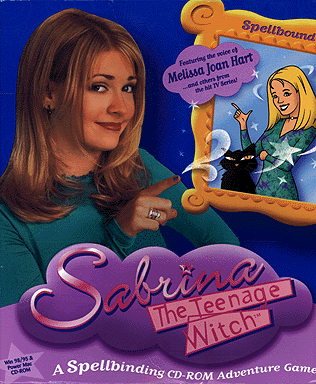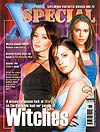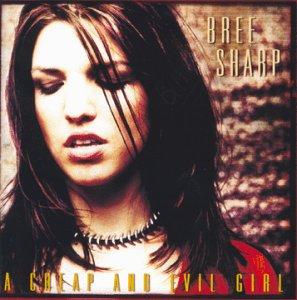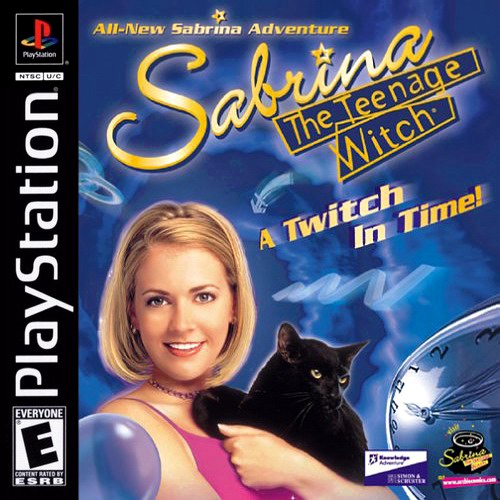|
Why Are We
Pushing Witchcraft On Girls?
by Matt Nisbet
Matt Nisbet is Public Relations Director for the Committee for the
Scientific Investigation of Claims of the Paranormal (CSICOP). This
article first appeared on the Skeptical Inquirer Electronic
Digest, October 28, 1998.
Sometimes the games that children
play can have serious consequences. On October 20, at a Maryland
high school, fifteen-year-old Jamie Schoonover was sent home from
school with a referral slip noting that she was disciplined for
“casting a spell on a student.” A classmate had accused
Schoonover, an admitted practicing witch and the daughter of a
witch, of placing a hex on her.
The news may sound
bizarre or like something from Arthur Miller’s The Crucible,
but the incident is the latest in a brewing national fascination
with witchcraft. Estimates vary, but there are between 400,000 to 3
million practitioners of Wicca in the United States. Adherents to
the religion, male and female, call themselves witches or Wiccans,
and are actively battling for religious acceptance and tolerance for
their beliefs. Some claim that Wicca is the fastest growing
religion in the country.
In sorting which
witch is which in this matter, anthropologists identify four types
of witches common to popular Western imagination. The “satanic
witch” was persecuted as a devil worshiper during the Inquisition
and the Salem witch hunts, and the image still abounds among
evangelical Christians who warn of the existence of widespread
satanic cults in the United States.
The “tribal witch”
represents the dualism of good and evil magic found in the native
religions of American Indian, African-Caribbean, and Pacific
Islander cultures. The tribal witch is thought to be the opposite
of the benevolent healer or shaman and is often made the societal
scapegoat for ill fortune or hardship. Recent political turmoil in
South Africa and Java have sparked national witch hunts resulting in
hundreds of murders fueled by jealously, fear, superstition and
prejudice. The “fairy tale witch” is the hideous crone found in
fables such as Hansel and Gretal and The Wizard of Oz.
Wicca, however,
falls under the category of what anthropologists call “neo-pagan
witch,” with most Wiccans tracing their origin to pre-Christian
times and Celtic druidism. Wicca has nothing in common with
so-called satanic witchcraft, and Wiccans do not profess a belief in
Satan, but rather in a female goddess that resides within all things
natural. Most Wiccans maintain a belief in psychic ability
including clairvoyance, psychokinesis and spirit communication. The
feminist movement has found an agreeable companion in Wicca, with
the religion’s emphasis on self-empowerment (often through
supernatural means), matriarchal deism, and female spiritual
leaders.
Like many things
in culture straddling the boundary between the mainstream and the
fringe, Hollywood and other sectors of the media, including book and
magazine publishers, have co-opted the rich subject matter of Wicca
and witchcraft into an explosion of books, films and magazine
articles. Currently in theaters is the
sister-story-turned-supernatural-yarn Practical Magic with
Nicole Kidman and Sandra Bullock. Television has taken notice with
the top-rated ABC sitcom Sabrina the Teenage Witch and WB
Network’s Charmed. Book sales have jumped since the late
1980s, with today’s hottest titles in witchcraft, typically a
combination of memoirs and New Age self-help, approaching 40,000
copies sold. Spin Magazine in its “Grrrl [sic] Power” issue
ranked witchcraft as the top interest among teenage girls. Even
advertisers are trying to charm consumers as Finesse Shampoo, Cover
Girl cosmetics and Camel cigarettes feature witches in their ad
campaigns.
The result is that
the cottage industry of Wicca, by word-of-mouth growth, has been
mutated into the latest Hollywood-driven fad. But do we really need
all this magical thinking? Why are we pushing witchcraft on teenage
girls when we desperately need to be selling girls on science and
math?
Even without the
burden of the magical thinking of witchcraft, long-existing cultural
barriers already hold back girls from performing on equal ground
with boys in math and science. According to a 1992 report by the
Wellesley College for Research on Women, on Advanced Placement exams
girls lag behind boys in math, physics, and biology. On the 1991
SAT, girls scored 44 points lower than boys in math. The National
Sciences Foundation reported that in 1991 girls earned only 29
percent of the science and engineering doctorates awarded in the
United States.
Unfortunately, the
late 1990s is a postmodern world where reality is conceived as
multitudinous, and taken as the latest image flashed across the
television screen or the hottest billion dollar ad campaign to
arrive from Madison Avenue. Parents and schools are responsible for
providing a solid grounding in the sciences and math and for
teaching critical thinking. But the media also shares some of the
burden. Society is constantly and relentlessly bombarded with media
presentations of pseudo-science, fantasy and the paranormal.
Witchcraft is only the latest example of a media-driven paranormal
fad and certainly not the last.
|




